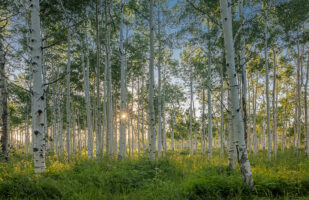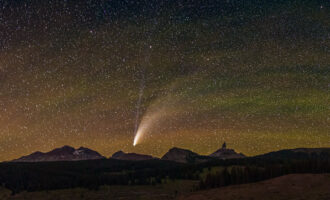So some are wondering how I’ve been capturing such long exposures in a single image, and I’m here to tell you that it takes a bit of effort, let alone some pretty serious CPU muscle and ample processing time. Utilizing image-stacking techniques commonly used in astrophotography for dark-sky imagery, last year I applied the process to daylight imagery, and have ever since been refining both the capture of the images and the compositing of the time-lapse sequences to produce static images that specifically show an interval of time. This time-stacking approach often rewards with unique and beautiful results, while at other times can stymie one with unanticipated results or unwanted image features, either of which take a tremendous amount of resources of all sorts in order to produce just one image, good, bad, or indifferent. It’s a bit like ‘rolling the dice’, albeit a sort of ‘educated’ throw (after 6+ months of producing these images). I’ve termed the resulting composites ‘TerraLapse‘ images, and I anticipate more to come in the future from this aspect of my business.
As yesterday’s snow storm brought about a fortuitous rapid clearing just prior to sunset that provided some amazing sky to work with, I grabbed the gear and headed out onto the deck to catch some time before the light disappeared. I shot from 6:45 to 7:24 PM, and then spent the next 6 hours compiling the TerraLapse images from 1080 raw files from a Canon 5D MkIII + EF 16-35/2.8L II w/polarizer. Here are the stats, for some perspective on the level of dedication required to produce TerraLapse images:
- 39 minutes shooting time
- 1080 images
- 28.2 GB of files
- 4.0 hours of CPU processing (upload, export to Photoshop, layer compositing, blending)
- 2.0 hours post-processing (sorting, sequencing, key image editing, cropping/perspective)
The captured images consisted of six different time-lapse sequences, resulting in my selecting three TerraLapse images composited from a total of 774 frames (25 minutes 7 seconds, totaling 7.2GB of files). These three select images essentially represent three different stages of a sunset, though viewed from the perspective of an interval of time (and a rather large one, photographically speaking). I’ve always been fascinated by long-exposure photography; long exposures in the ‘traditional’ sense (either film or digital) are typically limited to some small number of minutes (for a variety of technical reasons). These long exposures tend to smear detail in the clouds, and although it can result in some interesting images, I personally like to see some detail in the movement in the image. Stacking images in order to lengthen an exposure serves to preserve much of this detail, and it’s the main reason I’m currently on the path that I’m on.
The first image was captured while the sun was still fairly high in the sky, more of a midday-type of image:
Captured between 5:47:42 to 5:52:24 (4 minutes 42 seconds of effective exposure time), 143 images (3.77GB)
In the second image note the change in color of the clouds over time, while the shape of the clouds in the center illustrates their genesis and demise over the course of the 12+ minutes that the camera was recording their movement and change in color:
Captured between 6:02:52 to 6:15:35 (12 minutes 43 seconds of effective exposure time), 383 images (10.0GB).
The final selection depicts the end of the sunset, and concluded at about the time that the color disappeared from the clouds:
Captured between 6:16:19 to 6:24:31 (8 minutes 12 seconds of effective exposure time), 248 images (6.42GB).
I’ve included this last frame to give some perspective on how the sky actually looked while capturing the images; it’s often a challenge to anticipate cloud movement (speed, direction, etc.) in order to frame the image:
The following image is a 1:2 crop from the third TerraLapse image above, and illustrates the fine detail in the clouds, which often looks sort of like an impressionist painting, except is completely a natural occurrence:
Lastly, one abstract image captured looking nearly straight up (at 35mm), note speck of waning moon in upper-right blue sky:
On a closing note, a time-lapse sequence using the same frames as in the third TerraLapse image above:









Mike Lewis
4 Apr 2014Wow – fun technique, and very interesting result! I am a landscape shooter who is also into astrophotography, so I am aware of a lot of the processing steps for that sort of shooting. Very novel applying some of those techniques to daytime shooting – I like it! Thanks for sharing the link over on FM, where I originally stumbled into your image 🙂
ML